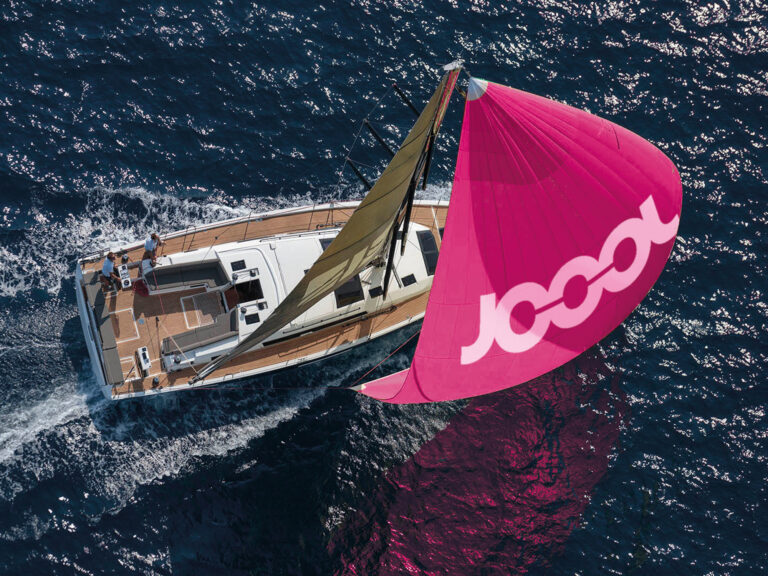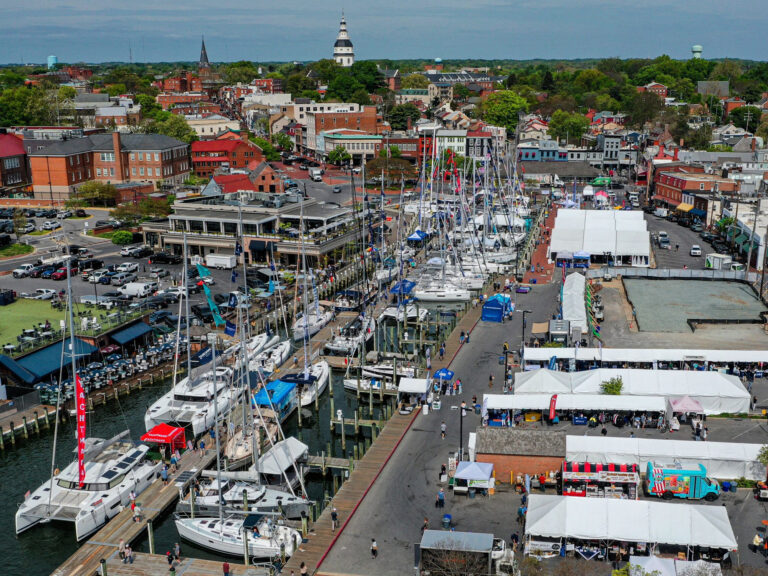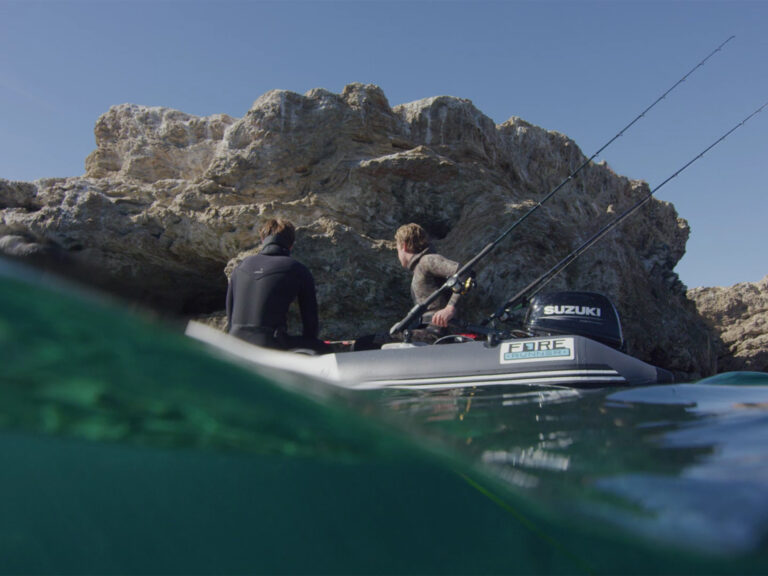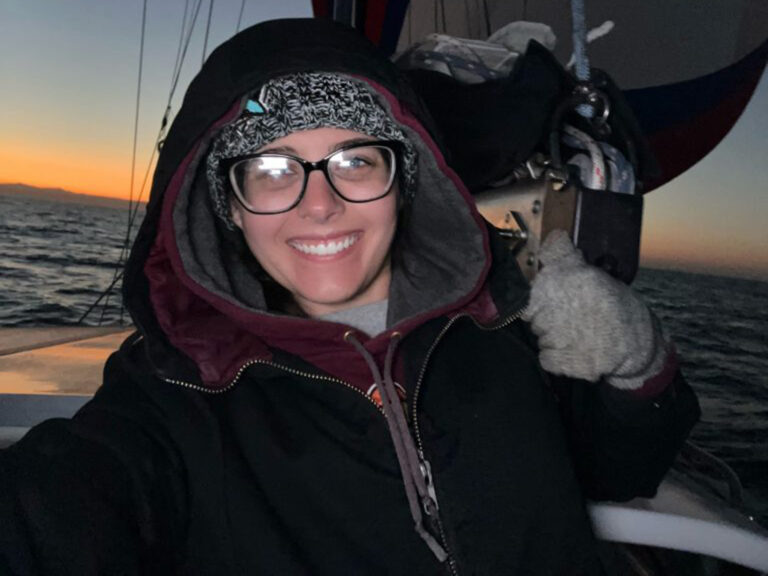After six days of battling against wind and waves with their damaged steering, Heya crossed the 2001 Atlantic Rally for Cruisers (ARC) finish line triumphantly in mid-December, having completed the 2,700-mile event from Las Palmas de Gran Canaria to St. Lucia. A huge crowd of ARC participants lined the dockside at Rodney Bay Marina to cheer their arrival with boats hooters and sirens galore. Skipper Mirko van Roomen and crewman Stefano Trabastioni, were happy and smiling, although obviously relieved to have arrived as they were escorted into Rodney Bay Marina by the St. Lucia Police Launch and a coast-guard vessel.
Despite three attempts to send tugs to their aid, the crew made it to St.Lucia without any outside assistance, after their steering failed some 325 miles out from St.Lucia. At the time, extreme weather conditions with 16-foot waves and strong 35-knot winds made it impossible for the crew to rig a jury rudder.
However, after three days of drifting, and with tugs unable to reach them due to mechanical problems, the weather eased. The break in the conditions was enough to allow Mirko and Stefano to rig a jury rudder using a spinnaker pole hung from the transom and winches to control it. Calmer seas and lighter winds allowed them to sail once more and they set a course for St. Lucia, having already transferred the other members of their crew to the yacht Chellers.
Heya, an EC37, also had problems with her satellite telephone, making communication with the MRCC in Fort de France, Martinique difficult. At the request of the MRCC, Heya continued to use their EPIRB to give position fixes, as they made their way to St. Lucia. The crew are now relaxing and enjoying some shoreside comfort after 24 days at sea.
The “Bat” (a.k.a. Turbo Squirrel) jury rig did the trick for the Sydney 41 El Syd in what Navigator Craig Dymock described as a “completely mad voyage!” It was a titanic struggle against the elements for the eight guys on board, when, on Day 1, the steering broke, then, on Day 2, the boom fell off. Despite setting up a temporary repair, the steering went again on Day 3, and on Day 4 they hove too for three hours to administer further repairs. The Day 4 repairs, which involved the use of a pump handle and a wardrobe rail, lasted until Day 9, when a broom handle was added to the equation, which finally remedied the situation for good.
Sailing hard was also a problem because too much pressure would have caused the makeshift repairs to break. However, under a poled-out No. 3 jib and a second No. 3 (the Turbo Squirrel/”Bat”), they still managed to achieve a top speed of 16.9 knots. Other hiccups included lost instruments and a lost spinnaker halyard; crew injuries that included a cracked rib, broken toe and a bolt through the skull. After the crew arrived in St Lucia in good spirits, skipper Ian McKinney commented, when asked for his opinion of the trip: “It was stern!”
In other ARC fleet news, Lady Caribe, a 65-foot Jongert, that had fallen way behind the main group following a detour to the Cape Verde Islands, went to the aid of one of 36 24-foot Ward Evans Atlantic Rowing Challenge boats racing 2,900 nautical miles from Tenerife in the Canary Islands to Barbados. The two-man crew of the rowing boat, Domani 2, was running low on food, and with the support vessel some 10 days away from them, Lady Caribe turned back and assist. It took almost 20 hours of searching and sailing away from St. Lucia before the two vessels rendezvoused and supplies were passed across. The Domani crew was well, but they were pleased to see Lady Caribes skipper, Manfred Theissig, and his crew.
French single-handed sailor, Jean-Luc Fontaine arrived in St Lucia, onboard the ARC yacht Spirit of Clyde, a Moody 38 CC. After helping to tie up the yacht, Jean-Luc drank a toast to his rescuers with cold rum punch on the dockside in Rodney Bay Marina and recounted his story.
Jean-Luc was forced to abandon his yacht Sagittaire, a 1969 Jouet, in position 22.35N, 24.34W after hitting an unidentified object which damaged the rudder and the watertight integrity of the hull. Two ARC yachts, Candela, a Jeanneau Sun Fizz 40, and Spirit of Clyde were notified on the emergency via the ARC net, and went to the aid of Sagittaire.
Due to larger crew numbers on board Candela, Jean-Luc was transferred to Spirit of Clyde having taken the decision to evacuate from the damaged vessel. Before leaving the yacht Jean-Luc was forced to cut the salt water inlets to scuttle it, since the stricken yacht would have posed a navigational hazard for other shipping. Jean-Luc commented “It was a hard thing to decide to do. And watching my yacht go down was very sad, but it was the right decision to abandon her.”
Spirit of Clydes Skipper, Irvine Watson, said: “The rescue worked well. It was too far to tow the yacht, and so the only option was to take Jean-Luc onboard. It was something we just had to do as fellow sailors, as of course we would all hope that someone would do the same for us if the need ever arose. Jean-Luc made a great extra crew member–and hes a very good cook! Were all obviously pleased to be here in St Lucia.”
The ARC finish line was staffed 24 hours a day by a team of volunteers on yachts, ready to give the crews a smile and a hooter blast when they finish. In Rodney Bay Marina, the bars and cafes were busy catering to crews as more and more ARC yachts sailed across the finish line, each one bringing her own stories to the western side of the Atlantic.
For more ARC news, past and future, log on to www.worldcruising.com/arc/fleetnews01/fleetnews.htm. The ARC2001 entry list is available at www.worldcruising.com/arc/entry01.htm







